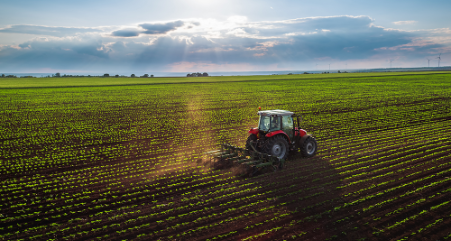
Recent announcements have tried to sensationalize recent developments in the fertilizer markets, portraying U.S. fertilizer companies in a negative light. However, the reality is that U.S. fertilizer manufacturers, importers and retailers are heavily invested in making sure that farming is profitable and sustainable. The U.S. fertilizer industry operates in a global economy, and the prices farmers pay for fertilizer are subject to a complex web of global supply and demand factors:
Global Supply and Demand: A total of 90 percent of global fertilizer consumption occurs outside of the United States, so a farmer in Iowa or Indiana could be competing in a market that includes growers a world away. The primary fertilizer materials, like the major crops, are commodities and are widely traded globally. Elsewhere in the world, fertilizer prices are also high – for some nutrients, even higher than they are in the United States. What’s more, fertilizers can only be produced in locations that have access to necessary natural resources. For nitrogen, that’s natural gas and for phosphate and potash, existing mineral reserves. Those limitations are yet another contributor to supply, and ultimately the prices farmers pay for these products. Because fertilizers are priced and sold in global markets, disruptions in other regions can also impact the U.S. market. Currently, several global disruptions have reshaped trade patterns, resulting in increased costs for shipping. It is important to note that any of these disruptions can change depending on action by governments.
“Facts are stubborn things,” is a statement often attributed to former U.S. President John Adams. Although Adams never saw the economic, environmental and social benefits afforded by commercially produced fertilizers in his lifetime, he probably knew that the truth is often more complex than it initially appears.”
Natural disasters. About 60 percent of total U.S. ammonia production capacity is in Louisiana, Oklahoma, and Texas because of their large reserves of natural gas.[1] The February 2021 ice storms and Hurricane Ida are just the most recent examples of natural disasters that interrupted production of fertilizers (and natural gas) in this critical U.S. production region.
COVID-19. To reduce potential exposure as much as possible due to the global pandemic, some manufacturers postponed regularly scheduled maintenance turnarounds (which require 2-6 weeks of downtime) to avoid having hundreds of additional contractors on site. Because these measures are necessary to the safety and environmental performance of these facilities, this action cannot be delayed indefinitely and impacted some production schedules.
Transportation. Timely fertilizer delivery is highly dependent upon global, national and local logistics and supply chains, which are feeling the impacts of the COVID-19 pandemic. Fertilizer moves by rail, truck, barge, pipeline, and ocean vessels. On a ton-mile basis, more than half of all fertilizer moves by rail. Over the past 20 years, rail rates to ship anhydrous ammonia have increased 206 percent, which is more than triple the average increase for all commodities combined.
“Facts are stubborn things,” is a statement often attributed to former U.S. President John Adams. Although Adams never saw the economic, environmental and social benefits afforded by commercially produced fertilizers in his lifetime, he probably knew that the truth is often more complex than it initially appears. Further information on supply, demand and other market dynamics is available from TFI.
[1] U.S. Geological Survey, Mineral Commodity Summaries, January 2021. Accessed at https://pubs.usgs.gov/periodicals/mcs2021/mcs2021-nitrogen.pdf



